Gaussian Minimum Shift Keying, or to give it its full title Gaussian filtered Minimum Shift Keying, GMSK, is a form of frequency modulation that is used in radio communications systems.
GMSK is probably most widely associated wit the 2G GSM mobile communications system where it proved to be an effective form of modulation. It was one of the reasons that GSM cellphones had a long battery life in view of the high efficiency that could be obtained from the RF power amplifiers.
GMSK basics
GMSK modulation is based on MSK, which is itself a form of continuous-phase frequency-shift keying, CPFSK. One of the problems with standard forms of PSK is that sidebands extend out from the carrier. To overcome this, MSK and its derivative GMSK can be used.
MSK and also GMSK modulation are what is known as a continuous phase scheme. Here there are no phase discontinuities because the frequency changes occur at the carrier zero crossing points. This arises as a result of the unique factor of MSK that the frequency difference between the logical one and logical zero states is always equal to half the data rate. This can be expressed in terms of the modulation index, and it is always equal to 0.5.

A plot of the spectrum of an MSK signal shows sidebands extending well beyond a bandwidth equal to the data rate. This can be reduced by passing the modulating signal through a low pass filter prior to applying it to the carrier. The requirements for the filter are that it should have a sharp cut-off, narrow bandwidth and its impulse response should show no overshoot. The ideal filter is known as a Gaussian filter which has a Gaussian shaped response to an impulse and no ringing. In this way the basic MSK signal is converted to GMSK modulation.

One of the advantages of MSK modulation in general and in this specific case, GMSK is that it. The MSK modulation makes the phase change linear and limited to ± (π/2) over a bit interval T. This enables MSK to provide a significant improvement over QPSK. Because of the effect of the linear phase change, the power spectral density has low side lobes that help to control adjacent-channel interference. However the main lobe becomes wider than the quadrature shift keying.
Generating GMSK modulation
There are two main ways in which GMSK modulation can be generated. The most obvious way is to filter the modulating signal using a Gaussian filter and then apply this to a frequency modulator where the modulation index is set to 0.5. This method is very simple and straightforward but it has the drawback that the modulation index must exactly equal 0.5. In practice this analogue method is not suitable because component tolerances drift and cannot be set exactly.

A second method is more widely used. Here what is known as a quadrature modulator is used. The term quadrature means that the phase of a signal is in quadrature or 90 degrees to another one. The quadrature modulator uses one signal that is said to be in-phase and another that is in quadrature to this. In view of the in-phase and quadrature elements this type of modulator is often said to be an I-Q modulator. Using this type of modulator the modulation index can be maintained at exactly 0.5 without the need for any settings or adjustments. This makes it much easier to use, and capable of providing the required level of performance without the need for adjustments. For demodulation the technique can be used in reverse.

Advantages of GMSK modulation
there are several advantages to the use of GMSK modulation for a radio communications system. One is obviously the improved spectral efficiency when compared to other phase shift keyed modes.
A further advantage of GMSK is that it can be amplified by a non-linear amplifier and remain undistorted This is because there are no elements of the signal that are carried as amplitude variations. This advantage is of particular importance when using small portable transmitters, such as those required by cellular technology. Non-linear amplifiers are more efficient in terms of the DC power input from the power rails that they convert into a radio frequency signal. This means that the power consumption for a given output is much less, and this results in lower levels of battery consumption; a very important factor for cell phones.
A further advantage of GMSK modulation again arises from the fact that none of the information is carried as amplitude variations. This means that is immune to amplitude variations and therefore more resilient to noise, than some other forms of modulation, because most noise is mainly amplitude based.
GMSK, Gaussian Minimum Shift Keying proved to be a particularly successful form of modulation for GSM and some other radio communications systems. Its combination of spectral efficiency and capability to enable efficient power amplifier operation enabled it to be an excellent choice for radio communications systems of the time.
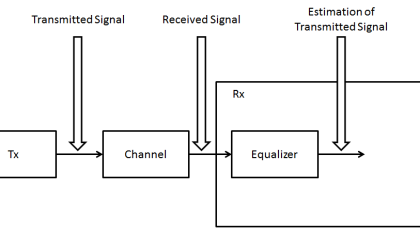
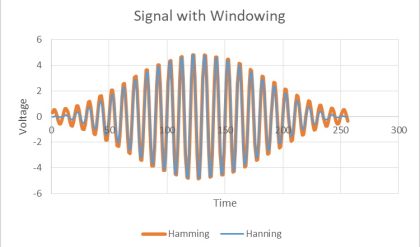

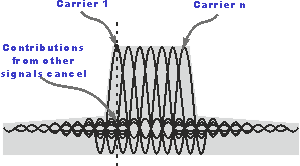
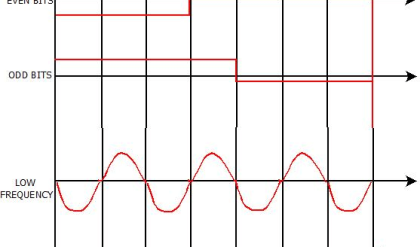
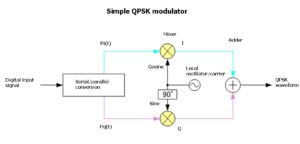
Comments are closed.